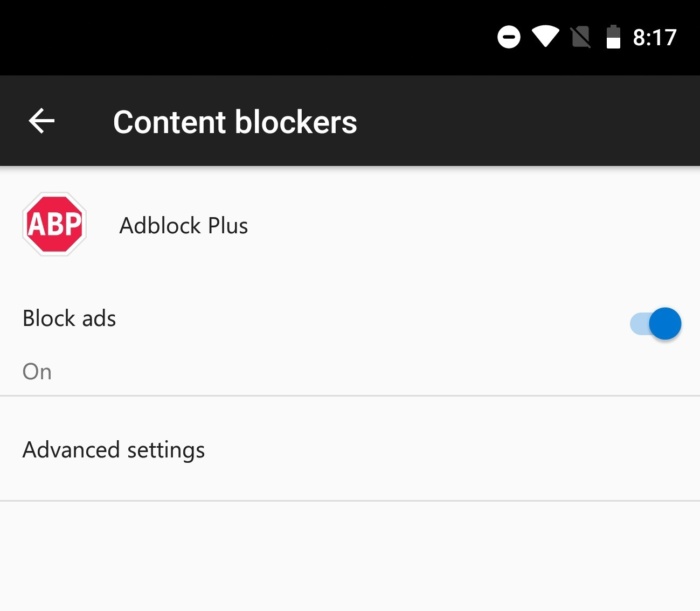
Microsoft in the past week updated its Edge browsers for Android and iOS, adding a built-in web advertisement blocker – a first for the Redmond, Wash. company.
The browser, Windows 10’s default but since October available on the two mobile operating systems, was refreshed June 19 and 21 for Android and iOS, respectively, with technology based on eye/o GmbH’s Adblock Plus, one of the world’s most widely-used ad blockers.
Eye/o spokesman Ben Williams confirmed that a partnership deal between the two companies had been reached, but he declined to comment further or answer questions about the financial terms. “The real beneficiaries here are users, who now have more options to customize and improve their online experience on the go,” Williams said in an email.
The in-Edge ad-blocker is disabled by default in both the Android and iOS versions, requiring the user to manually switch it on. In both, the setting is accessible from Settings/Content blockers once within the browser.
“You’ll see acceptable ads. Change this any time in Settings,” reads text displayed in the iOS edition of Edge once Adblock Plus has been engaged.
This is the first time Microsoft has added a web ad blocker to any of its browsers, although Adblock Plus – and a multitude of rivals – have been available for years as browser add-ons for Internet Explorer as well as Edge.
Microsoft declined to answer questions about the partnership and, when asked whether it plans something similar for Windows 10’s browser, would only say that an Adblocker Plus extension is available for that version.
The move puts Microsoft in the same category as Google’s Chrome and Mozilla’s Firefox, two others of the Big Four browsers with ad-blocking technology already baked in or planned for this year. Google introduced a form of ad blocking in Chrome earlier this year – an effort that purports to scrub the most annoying ads – and Mozilla has laid out a timetable for its own stab at deleting ads that will reach users in September or October.
Notably, Microsoft didn’t broadcast the news that it had integrated Adblock Plus with Edge on Android and iOS. That was decidedly different than the tack that Google took with Chrome; it made sure users – as well as site publishers – knew that ad filtering was coming, talking it up for a year prior to actual launch.
In the past, Microsoft has been hesitant to weigh in on one side or another when browser controversies have developed, perhaps remembering antitrust actions in the U.S. and European Union that originated in complaints about its integration of browser and operating system. For example, when the Do Not Track (DNT) privacy movement got rolling, Microsoft was initially adamant about automatically enabling DNT as it was developing Internet Explorer 10 (IE10) in 2012. Later, Microsoft backed away after ad industry lobbying groups yowled, calling the DNT move “unacceptable” and arguing that IE’s setting would “harm consumers, hurt competition, and undermine American innovation.”
At the time, IE accounted for more than half of the global browser share.
But Edge, whether on the desktop or on a mobile device, is no IE. According to analytics vendor Net Applications, Edge is the preferred browser on fewer than one out of every eight Windows 10 PCs. On mobile, Edge’s user share was an anemic eight-tenths of one percent last month.
In lieu of a mobile browser of its own – Microsoft forfeited that market when it surrendered to reality and gave up on putting Windows on smartphones – the firm used the guts of Chrome (the Blink rendering engine) to build its Android Edge, and the foundation of Apple’s Safari (the WebKit engine) to craft the iOS version. The company has pitched these Edges as companions to Edge on Windows 10, especially to flesh out a feature dubbed “Continue on PC” in the desktop OS.
Edge for Android can be downloaded from Google Play; Edge for iOS can be downloaded from the App Store.
 Microsoft
MicrosoftDisabled by default, the baked-in Adblocker Plus can be switched on from Settings/Content blockers in Android (shown here) and iOS.
This story, “Microsoft takes first whack at browser ad blocking with Edge on Android, iOS” was originally published by Computerworld
.



